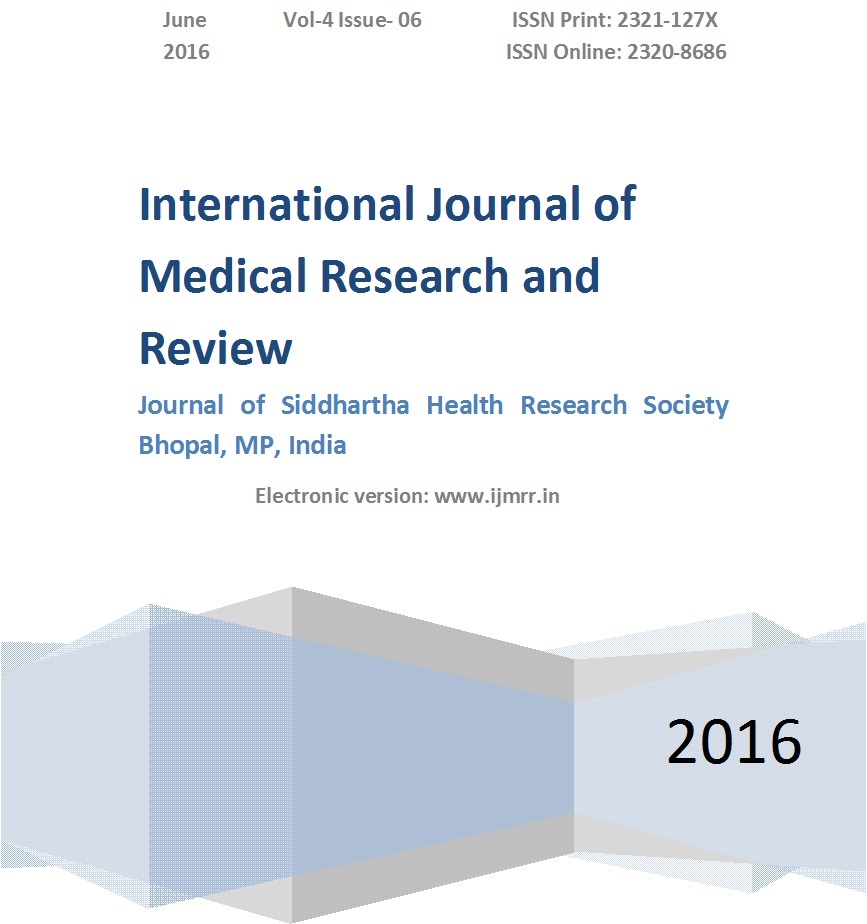Endoscopic evaluation and treatment of epistaxis – A prospective study
Abstract
Epistaxis is a common nasal symptom seen in all age groups. It often presents as an emergency. An attempt should always be made to find any local or systemic cause for it because epistaxis is a sign and not a disease per se.
Objectives: To evaluate the local causes of epistaxis using rigid nasal endoscope for specific treatment planning.
Methods: This was a prospective study which included 50 patients with epistaxis who attended the Otolaryngology outpatient department of SUT Academy of Medical Sciences, Trivandrum over a period of one year. Rigid nasal endoscopy under local anesthesia was done for these patients for whom both anterior and posterior rhinoscopy could not reveal any local causes.
Results: Nasal endoscopy helped in finding the local causes for epistaxis. Epistaxis was more common in males (66%) and majority was in the age group of 21-30 years (46%). The causes were posterior deviation of nasal septum with spur (24%), bleeding points on the nasal septum (12%), rhinosporidiosis (10%), infected polyp (10%), deviated nasal septum with allergic rhinitis (8%), congested adenoids (8%), deviated nasal septum with sinusitis (4%), nasopharyngeal mass (4%), and miscellaneous conditions (6%). In 6% patients, no significant local cause was detected. All the patients were treated according to the endoscopic findings.
Conclusion: Nasal endoscope is an important tool in diagnosis and treatment of local causes of epistaxis.
Downloads
References
2. Dhingra PL, Dhingra S: Diseases of Ear, Nose and Throat: New Delhi: Elsevier: 6th Edition: 2014
3. Almeida GS, Diógenes CA, Pinheiro SD. Nasal endoscopy and localization of the bleeding source in epistaxis: last decade's revolution. Braz J Otorhinolaryngol. 2005 Mar-Apr; 71(2):146-8. Epub 2005 Aug 2.
4. Mahesh Babu M, Gowda B, Satish HS. Role of Rigid Nasal Endoscopy in the Diagnosis and Management of Epistaxis. IOSR Journal of Dental and Medical Sciences, 2014: 13 (3): 40-45. ICID: 1113213.
5. Safaya A, Venkatachalam VP, Chaudhary N. Nasal Endoscopy-Evaluation in Epistaxis. Indian Journal of Otolaryngology and Head and Neck Surgery. 2000 Apr; 52(2): 133–136. PubMed PMC3451285.
6. Kumar MVV. Prasad KUR, Gowda PRB. Rigid Nasal Endoscopy in the Diagnosis and Treatment of Epistaxis. J Clin Diagn Res. 2013 May; 7(5): 831–833. doi: 10.7860/JCDR/2013/4421.2995. Epub 2013 May 1.
7. Chhapola S, Matta I, Marker P. Comparison of Blind Nasal Packing vs Endoscopic Control of Epistaxis in an Emergency Setting. International Journal of Head and Neck Surgery. 2011 May-Aug; 2(2): 79-82.
8. Shelkar R, Vedi J, Ekhar V, Dasgupta KS, Lanjewar K. Role of Nasal Endoscopy in Sinonasal Diseases. International Journal of Scientific study. 2014; 2(1): 6-10.
9. Stankiewicz JA. Nasal endoscopy and control of epistaxis. Current Opinion in Otolaryngol Head Neck Surgery. 2004 Feb; 12(1): 43–45. PubMed 14712120.
10. Elwany S, Hesham AF. Endoscopic Control of Posterior Epistaxis. The Journal of Laryngology and Otology. 1996 May; 110: 432–34. DOI: http://dx.doi.org/10.1017/S0022215100133900.
11. Parajuli R. Evaluation of Etiology and Treatment Methods for Epistaxis: A Review at a Tertiary Care Hospital in Central Nepal. International Journal of Otolaryngology. 2015; Volume 2015: 1-6. http://dx.doi.org/10.1155/2015/283854



 OAI - Open Archives Initiative
OAI - Open Archives Initiative


